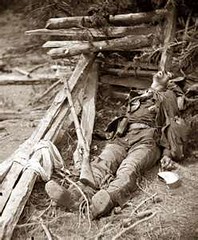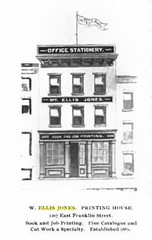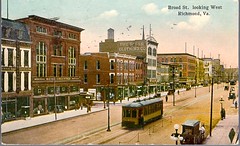One of the most interesting facets of doing genealogy work is identifying the physical places where my ancestors lived and worked. “Place” has always been a tangible entity for me. I am tied to place as much as I am to people and their stories. To me the places tell a story all their own, and form characters as relevant to our history as any other person or thing. I think of the places that were “home” to me as a child; my grandfather’s grocery store, my grandparents bungalow next door, the railroad tracks behind the house, the woods and cemeteries that surrounded my childhood home. These places are magical to me and have infused in me a sense of home and continuity that the wrecking ball and bulldozer can’t touch.
The places listed below are similar – an anchor to my past and the people who founded my generation. They represent the physical buildings and spaces occupied, footsteps still ringing in them, of those who came before me. It took me years in some cases to dig up this information, and I’ll spend years digging up more. This is just a sampling.
————-
Clemmitt & Jones in June, 1877
This is the printing shop where William Ellis Jones, II, (1838 – 1910), did his apprenticeship as a boy, worked at as a compositor until the outbreak of the Civil War, and then returned to in 1865 at the conclusion of the war.
It was located at at “Eleventh Street between Main and Cary”.
Source: Company letterhead/bill in my possession
————-
In 1879, after William H. Clemmitt retires from the business, William Ellis Jones becomes sole proprietor of the printing company.
1899 “William Ellis Jones” listed the following in an imprint:
“Imprynted by William Ellis Jones, nexte ye signe of ‘The Mint’, in South Twelfth Street, Richmond, Virginia, July, 1899”
Source: Virginia Historical Society Rare Books Collection
Title: “Some notes on the first recorded visit of white men to the site of the present city of Richmond, Virginia : Saturday and Sunday, May 23 and 24, 1607 : a paper read at a meeting of the Association for Preservation of Virginia Antiquities, held at “Laburnum”, June 10, 1899 / by Robert Lee Traylor.”
Author: Traylor, Robert Lee (1864-1907)
Published: Richmond : Privately printed [W. E. Jones], 1899
Call No: F233.42 .T82 1899
————-
In 1903 the location of the printing company was at 1207 East Franklin Street. The image below is what the building looked like.
Source: “Richmond, Virginia: The City on the James : the Book of Its Chamber of Commerce and Principal Business Interests”
Author: G. W. Engelhardt
Published: Richmond, 1903
————-
Residential Addresses
I’ve got the general vicinity and neighborhood for several residential addresses for the Joneses of Richmond, but so far I have only nailed down one precise location.
In 1913, the “1911-12 Yearbook of the Association for the Preservation of Virginia Antiquities”, lists among its subscribers, on page 104 “Jones, William Ellis, Mrs., 2507 Hanover Avenue, Richmond, Virginia”
I believe this is the first home that Thomas Norcliffe Jones built in Richmond, for his new wife Margaret White, and their growing family. He retained the property (as a rental), and it was passed on as such to his son William after his death. When William died in 1910 and the family’s income was cut off, I believe that Addie Gray Bowles (William’s widowed daughter-in-law) sold the Henrico property and the elegant brownstone on Church hill, and moved back to this very modest home in what is now Richmond’s Jefferson’s Ward.
You can Google Earth this address and from behind the foliage get an idea of the building. When the house was built in the 1830’s the streets were dirt and this location was considered to be on the remotest outskirts of the city.













You must be logged in to post a comment.